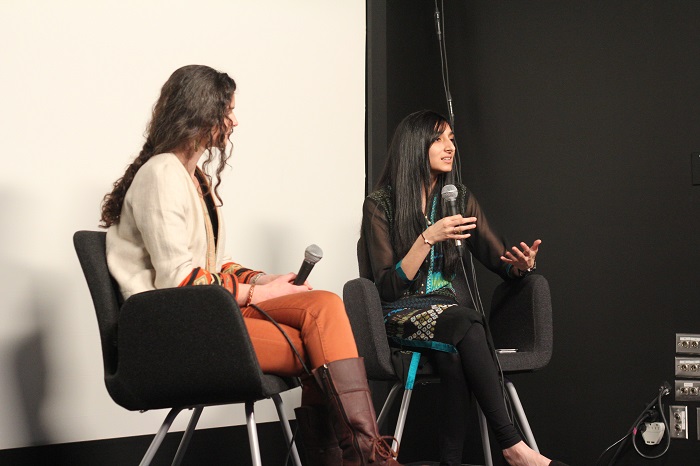British film student Meera Darji explores India’s marginalized hijras in Transindia
The idea to explore India’s LGBTQ+ community for her final university project arose when Meera Darji, a British film student, began researching the country’s perception of sexuality. Through her research, she discovered hijras, people who adopt a gender role that is neither male nor female.
“They go through the whole castration process, but they do not fully transform into a woman,” Darji explained at a screening of her latest documentary, Transindia, on Feb. 10. The event was hosted by the Montreal-based non-profit organization Never Apart. “It’s almost as if they are marrying into the community, and they have these vows and values that they live upon throughout [their lives].”
Darji described hijras as being “quite spiritual” and perceiving themselves as having a sort of “female power.” In 1871, after the British colonized India, hijras were criminalized under the Criminal Tribes Act, which was repealed in 1952. Despite this change, the hijra community is still marginalized in India, according to a synopsis of the documentary. “I only [heard] negative rumours that my family had told me,” said Darji, who has relatives living in India.
According to Darji, the most common rumor about hijras is that they curse people who make eye contact with them or who do not give them money when they beg at weddings. Marginalization and prejudice makes it difficult for hijras to find jobs, Darji explained, so often their only source of income is begging. When she traveled to Idian and met the hijras, Darji discovered how inaccurate society’s perception of them is. “They were welcoming and invited me to their house to have dinner,” she said. “We became really good friends. I wasn’t expecting that.”
Darji claimed the most challenging part about making the documentary was gaining access to the hijra community. “In India, different districts have their own hijra communities,” she said. There is a tea store next to her grandfather’s temple where hijras spend a lot of time socializing. One morning, Darji received a phone call from her grandfather who then handed the phone to a hijra. This is what allowed Darji to begin making connections with the community.
Then came the next hurdle: building trust. When she arrived in India, Darji said she spent an entire week with hijras to get to know them better before she started filming. “I spent time with them without a camera,” she said. “I wanted to show them that I genuinely cared about them and that I didn’t just want to get amazing footage.”
What Darji learned during her time with hijras is that, although they are marginalized by the wider Indian society, they welcome people like them as family. “They see themselves as having mothers and sisters within that community, so they don’t feel like they are alone,” Darji said. “They feel like they have nowhere else to go except for this community, so they are all on the same journey, and they stick together.”
Darji said she wants more people to understand the hijras’ perspective and accept them as they are. “I want to show an understanding through the film so that people can accept [them],” she told The Concordian. “If you don’t have education for something, how are you going to understand it?”
This is part of Darji’s belief that communication is vital to creating social change and acceptance in our society. “Start conversations,” she asserted, adding that film is a great way of doing so because it captures people’s attention. “Now you know about the hijras—maybe tell your family and friends about it. The best way is talking about it.”
Photo by Sandra Hercegova




